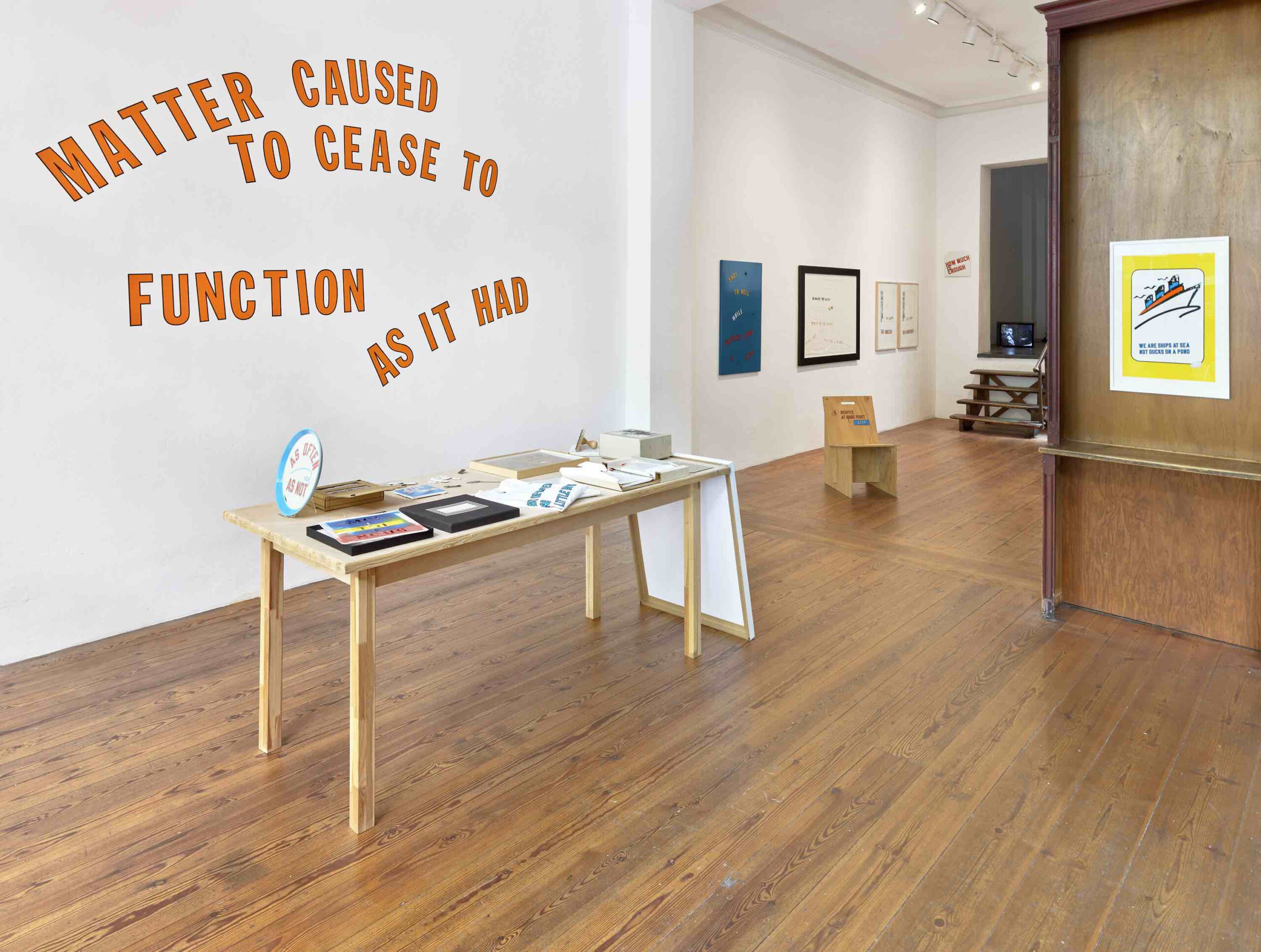
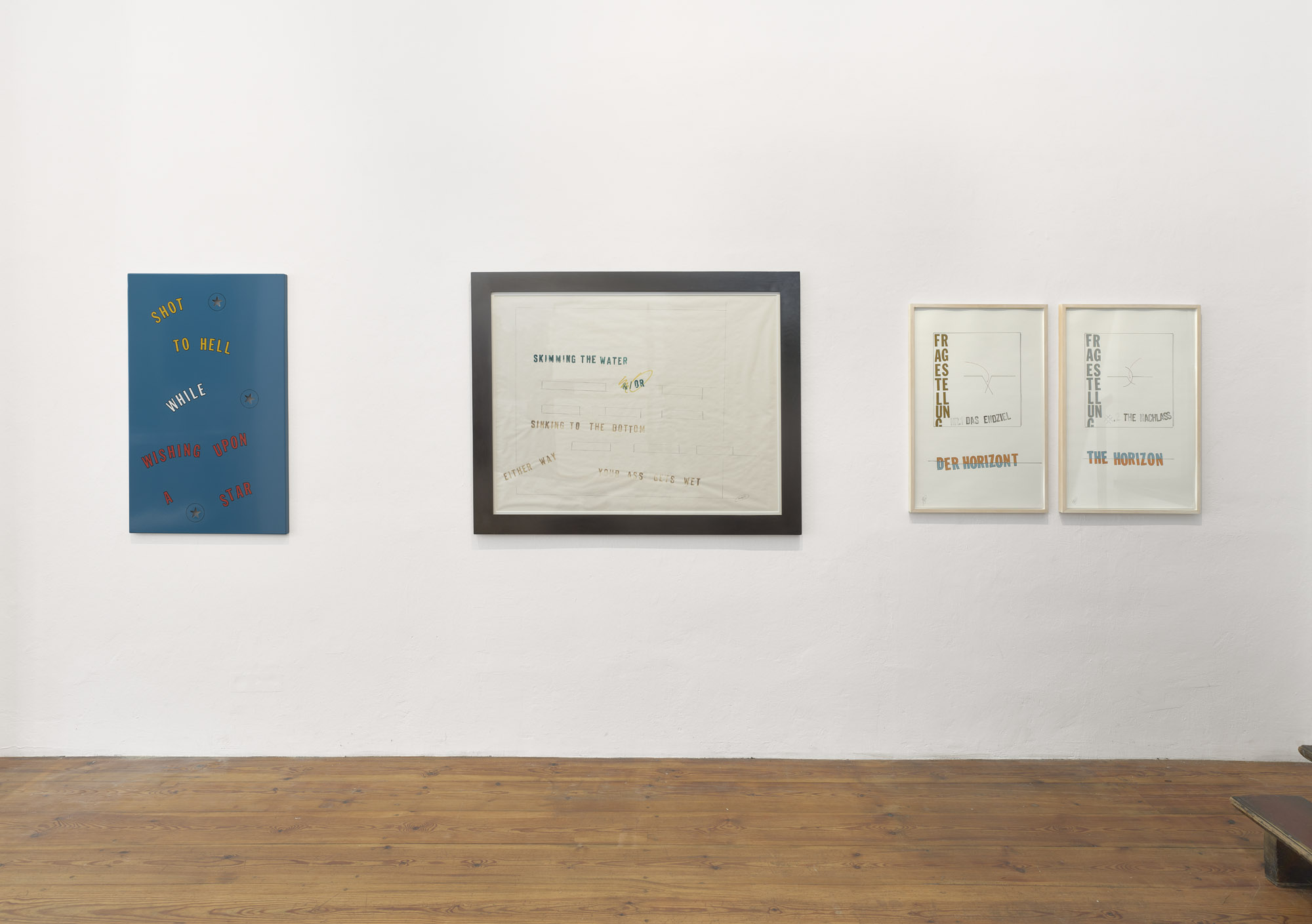
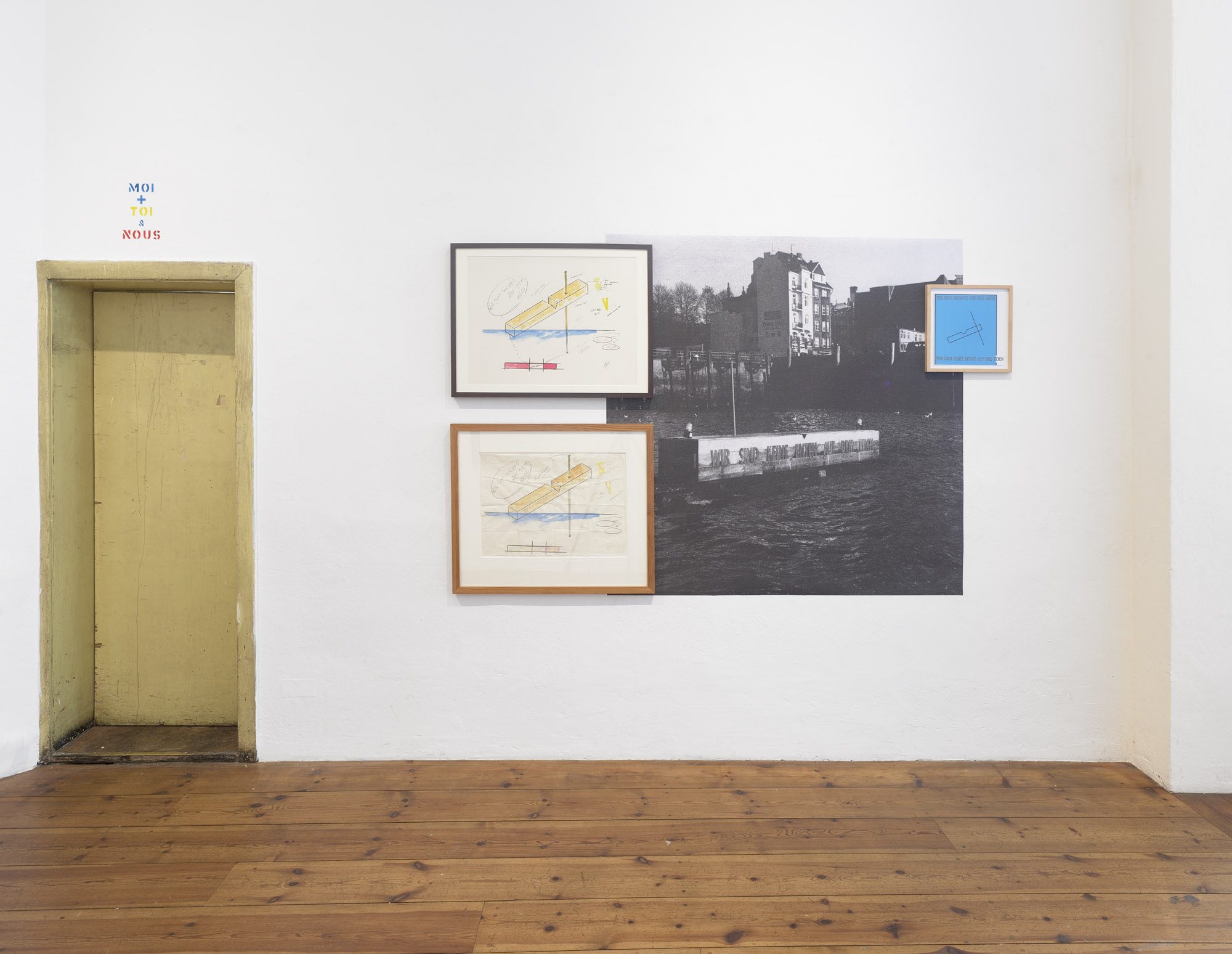
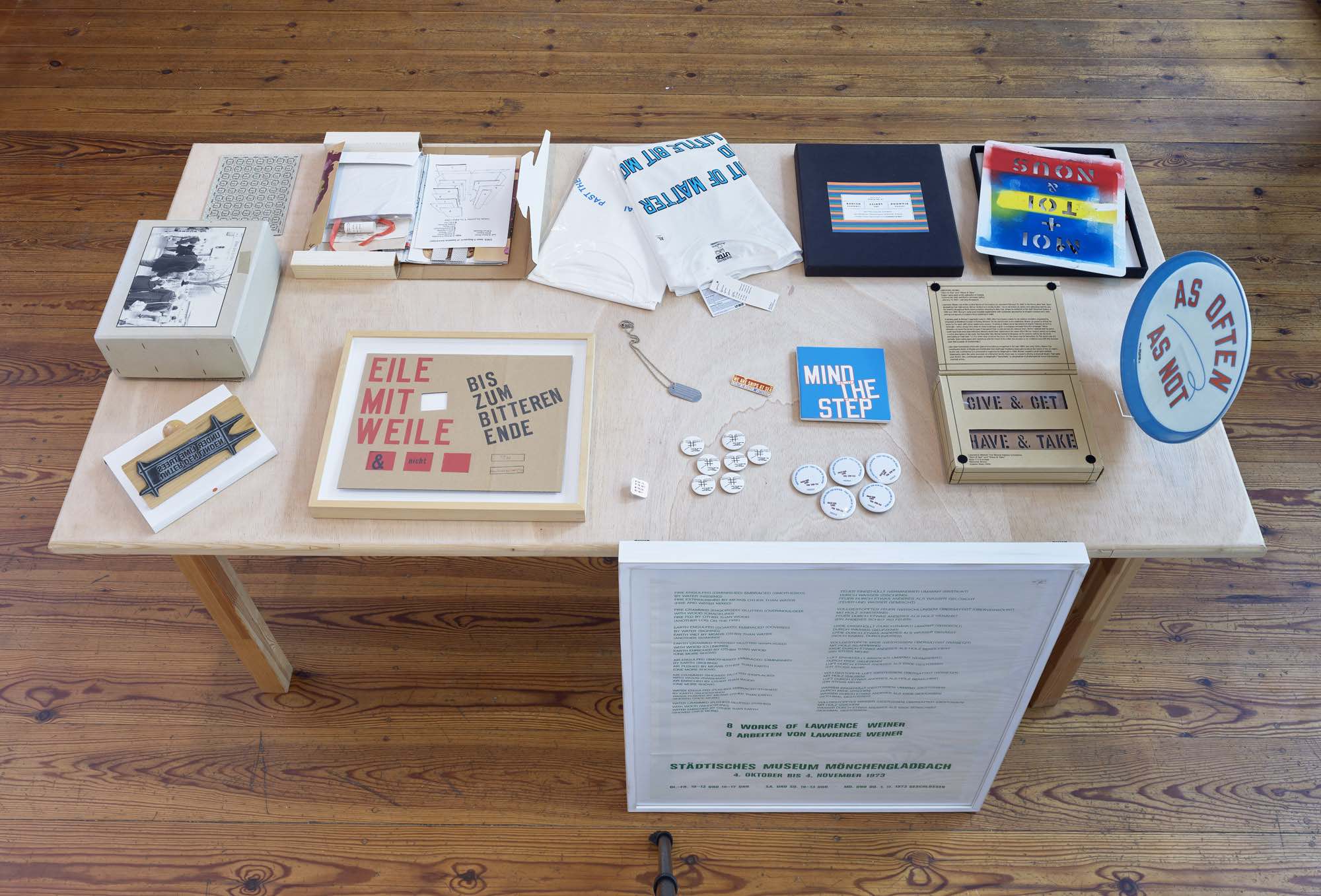
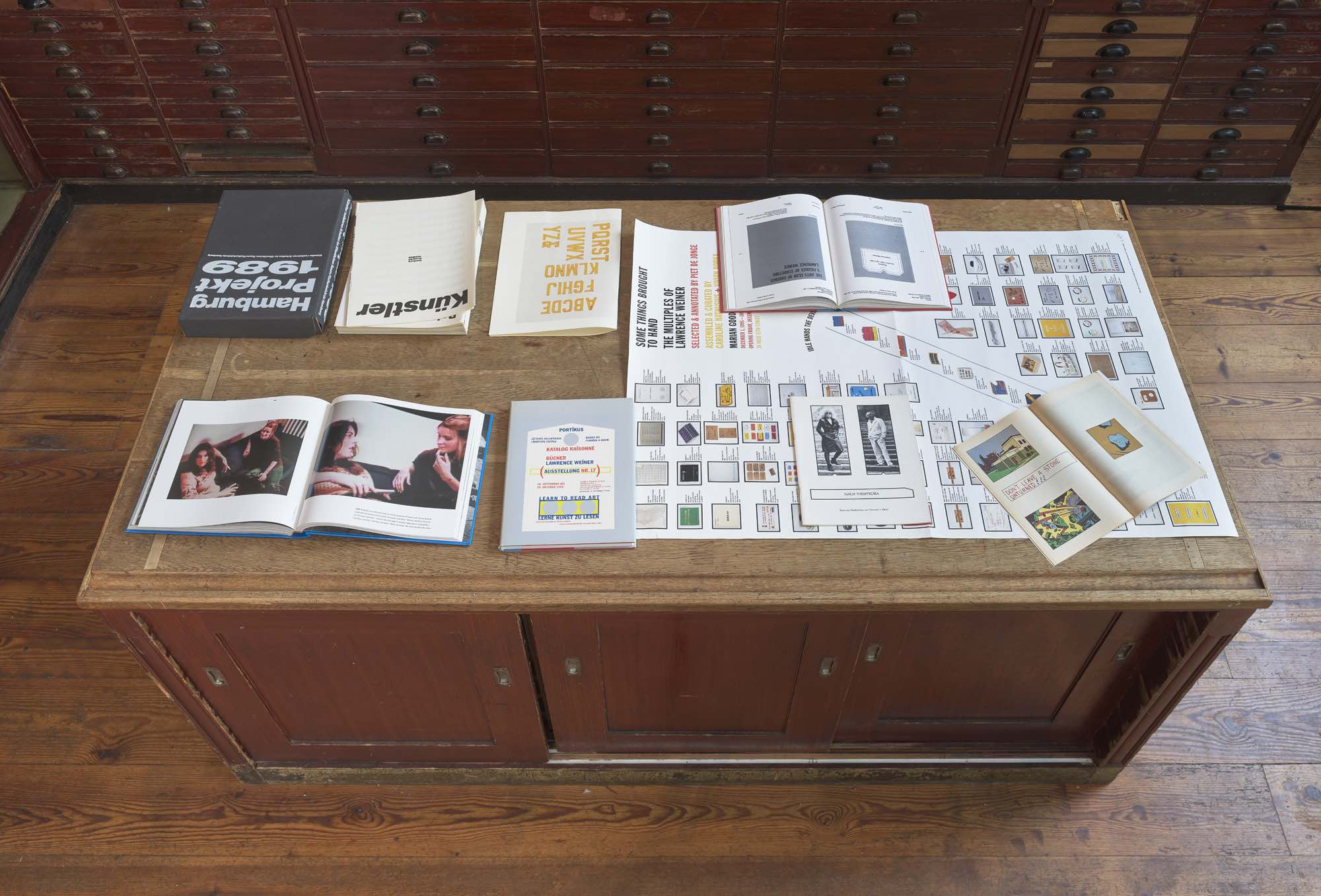
Lawrence Weiner
WE ARE NOT DUCKS ON A POND, WE ARE SHIPS AT SEA
September 16 to December 23, 2022
Potsdamer Straße 97, 10785 Berlin
Art, Lawrence Weiner once said, is made for people by people. It is there to be used, he thought, and that is why it cannot exist in obscurity. The art of Lawrence Weiner, born in 1942 to a candy-store owner in the New York Bronx and died in 2021, took on many forms. He insisted in putting his art out there in the public space, in bold type, capitalized for readability, and preferably translated into the respective local language. It was groundbreaking in its audacity — and its accessibility.
Weiner saw his textual works as sculptures. In general, his use of terms and concepts deserves attention: Metaphors were anathema to him. He didn’t think it was possible to make a clear distinction between message and wording. While art historians list him as one of the prime representatives of concept art, he himself rejected the label— for what was it pitting itself against? Was non-conceptual art even possible?
To Weiner, the idea was essential, on par with its realization – this he proclaimed in his 1968 Declaration of Intent.(1) Language, words and text became his material of choice with which to demonstrate concepts, ideas and thoughts. He articulated these in a prosaic form, laconically terse and stripped down to the basics, neutral, without so much of a hint of a concern for those questions of origin and identity that occupy the minds of so many today, minimal but poetic, always holding open a space for thought.
So too in this affair with the ducks and the ships. ‘We are ships at sea not ducks on a pond,’ he wrote in copper capitals on a floating oak wood object, which he had anchored in the Elbe outside the port of Hamburg at the end of the 80s. This was Weiner’s contribution to the Hamburg Projekt 1989, a project for art in public space commissioned by the city of Hamburg, which drew together more than 50 other artists from the USA and Europe, among which Dan Graham, Jenny Holzer, General Idea, Raimund Kummer or Ernst Mitzka. The latter was trying out a rowing boat in a fire pond at the end of the 1970s in the vicinity of Hamburg, when Weiner came to visit him. Weiner observed this endeavor and offered precisely this elliptical comment: ‘We are ships at sea not ducks on a pond.’ Much can be read into this phrase — whether then, in 1989 or today, it can equally be taken to be a statement about art, life, or even about the city of Hamburg with its global port.
In 1989, the sculpture could have been mistaken for a ship, or at least for part of one. The Hamburg port authority even ordered that navigation lights be added to it to prevent collisions. One day it disappeared, never to resurface – literally. Perhaps it did indeed sail out to sea in the hope of ridding itself of the small-mindedness of its duck identity.
All that remained of this piece was its construction drawing, which inaugurated a long-term collaboration between Weiner and Klosterfelde Edition: The screen print of this drawing was the very first edition to be published by Helga Maria Klosterfelde in Hamburg in 1990. Over the years, the gallery produced three designs that bore this statement of self-confidence. The very last of these was made in 2017: a large-format screen print poster showing a passenger steamship just as it sets out to sea.
The exhibition takes its name from this first collaborative edition; arrayed around it are other works that testify to the diversity and breadth of Weiner’s work, among them screen prints, enamel signs, posters, placards, postcards, t-shirts, objects and books.
The very first edition that Weiner was at all involved in was S.M.S. Shit must stop, a box of mail art filled with multiples of known and lesser-known artists to which he contributed and that was published by the artists William N. Copley and Dimitri Petrov in six editions in 1968. S.M.S. Shit must stop was a bimonthly publication which operated on subscriptions, conceived as a counter-initiative to the mainstream art market. Weiner, who at that time still referred to himself as Larry Wiener, contributed to the fifth edition called “Turf, Stake and String” alongside other artists such as Yoko Ono and Bruce Nauman.
His major work ‘Matter caused to cease to function as it had’ (1995) is present in the exhibition not just in the form of a construction drawing but also, fulfilling the purpose of Weiner’s Declaration of Intent (1), as a wall painting. In huge letters, painted by hand straight on the wall, the nine words loom over the works of the exhibition like an axiom.
Enamel metal signs – a well-known sight from shop-fronts – figure among Weiner’s favored materials. Weiner lifted these from the world of advertising and used them as a support for his statements. Over a meter in height, “Shot to hell” (1996) is the largest of these objects.
And then there is a wooden chair from 2015, which is assembled out of four simple and therefor low-waste boards. Printed on the seating furniture are words that could hardly be more fitting: “A Respite at Some Point ASAP”.
Text by Beate Scheder
Translation by Isolda McLiam
1 „The artist may construct the piece. The piece may be fabricated. The piece need not be built.”
